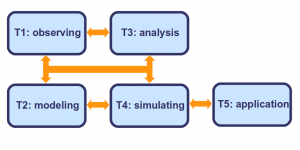Algorithms for modelling the visual system: From natural vision to numerical applications.
PROJECT GOALS:
-To provide new facts about non-standard retinal cell behaviour
-Taking into account natural image scenarios
-Designing innovative visual operators
-To be benchmarked and experimented
-Using high-level statistical methods and tools
KEOpS attempts to study and model the non-standard behaviour of retinal (ganglion cells) sensors observed in natural scenarios. KEOpS also attempts to incorporate the resulting models into real engineering applications as new dynamical early-visual modules. The retina, an accessible part of the brain, is a unique model for studying the neural coding principles for natural scenarios. A recent study proposes that some visual functions (e.g. movement, orientation, anticipatory temporal prediction, contrast), thought to be the exclusive duty of higher brain centres, are actually carried at the retina level. The anatomical and physiological segregation of visual scenes into spatial, temporal and chromatic channels begins at the retina through the action of local neural networks. However, how the precise articulation of this neural network contributes to local solutions and global perception necessary to resolve natural task remains in general a mystery. KEOpS thus attempts to study the complexity of retinal ganglion cells (the output to the brain) behaviours observed in natural scenarios and to apply this result to artificial visual systems. We revisit both the retinal neural coding information sent to the brain, and at the same time, the development of new engineering applications inspired by the understanding of such neural encoding mechanisms. We develop an innovative formalism that takes the real (natural) complexity of retinal responses into account. We also develop new dynamical early-visual modules necessary to solve visual problems task.

